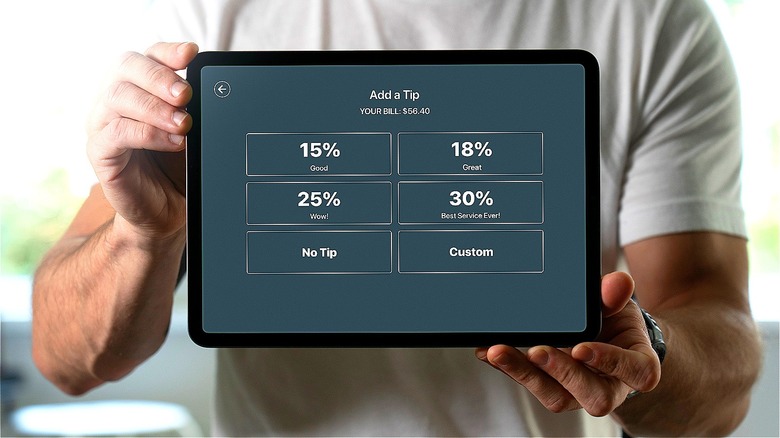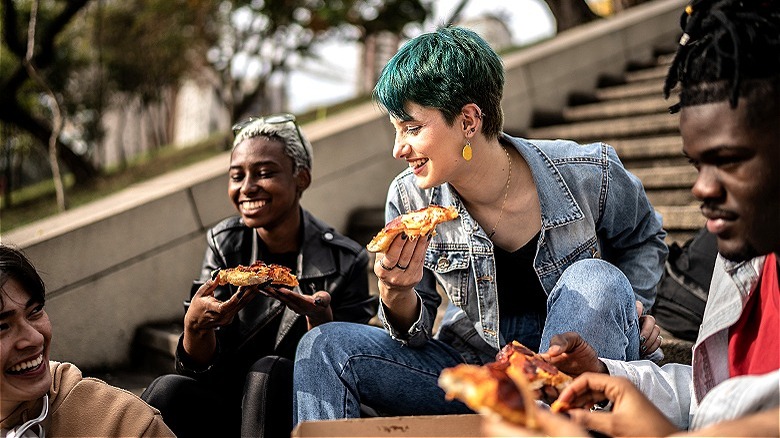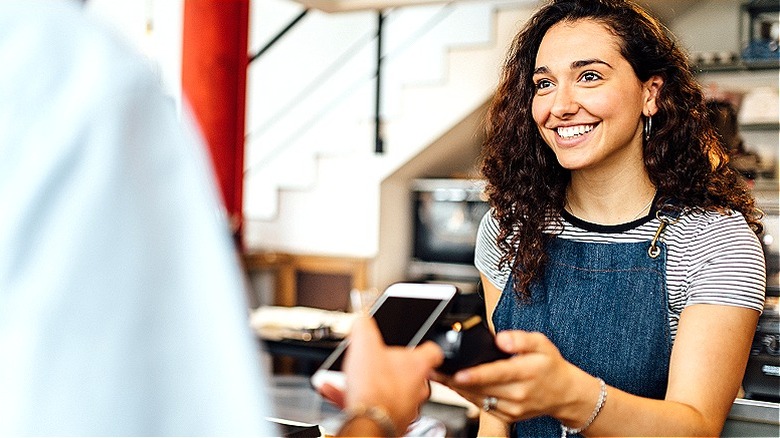This Generation Has The Worst Tippers, According To Research
Of all the elements of our lives that were upended during the pandemic, perhaps nothing has faced the same roller coaster-like rise and fall as tipping has. Front-line public-facing restaurant workers, baristas, and delivery drivers experienced a huge boost in tips in a show of gratitude during the worst periods of the pandemic. However, post-pandemic economic hardships have led to a dramatic drop in tipping rates across the country. Even worse, people's opinions about tipping have changed, with a 2023 Bankrate survey finding that two in every three United States adults have a negative view of tipping. Men and Gen Z, in particular, are the least likely to tip for service, and even when they do tip, it's less than other demographics and generations.
Many of the reasons for people's growing dislike of giving a gratuity stems from the pandemic's meteoric rise in tipping. While it was intended to be a temporary boost during a difficult time, it has instead become a confusing issue mainly due to the fact that many businesses and workers were hoping that tipping levels would stay the same. However, growing inflation, combined with rising interest rates, exorbitant housing prices, and the return of student loan repayments have caused many to reassess their spending and financial habits instead. According to Toast's Restaurant Trends Report, tips at quick-service restaurants fell to 16.7% in early 2023, a five-year low. At the same time, tips on delivery and takeout from the same quick-service-style restaurants fell back to pre-pandemic levels at 13.9%.
Gen Z tipping habits versus other generations
Gen Z has very different financial etiquette than other generations, so it's no surprise their tipping habits, in particular, would be different than other groups. However, just how different might be a bit of a shock. When compared to the baby boomer generation, who were found to be the best tippers in Bankrate's survey, the lack of Gen Z tipping is really highlighted. For instance, only 35% of Gen Zers reported always tipping when eating at a sit-down restaurant compared to 83% of boomers. Tipping on food delivery was also a gap, with only 31% of Gen Zers reporting always doing so compared to 62% of boomers.
There was one category where Gen Z tipped more than other generations: home service and/or repairs, where 15% of respondents reported tipping compared to only 6% of boomers. Interestingly, boomers and Generation X were more likely to say tipping culture has gotten out of control (33%) than Gen Zers were (22%), a finding that doesn't help explain Gen Z's lower tipping levels.
What's more, a person's gender and the region in which they live can also significantly impact the way they tip. Across all categories, men were less likely to tip (and tip a lower amount when they do) than women. Midwesterners, meanwhile, are more likely to always tip hairdressers, food-delivery workers, and restaurant servers, while people living in the Northeast are most likely to always tip taxi/rideshare drivers and baristas.
What's the problem with tipping today?
Beyond generational differences, part of the frustration about tipping is that the process has gotten more complicated. Bankrate's survey found that people had specific complaints about tipping that contributed to their negative opinions about it. Topping the responses was that 41% of those surveyed felt that businesses should be paying their employees better rather than relying on tips to offset poor pay.
Only seven U.S. states currently ban tip credit (Alaska, California, Minnesota, Montana, Nevada, Oregon, and Washington), which is the practice that allows businesses to pay their workers below minimum wage so long as their tipped income ensures they hit the federal minimum wage of $7.25 an hour. Tip credit allows businesses to underpay service staff by having customer tips offset their wages (employers are only required to pay workers $2.13 an hour as tipped employees).
Further, while selectable tipping options on point-of-sale tablets and screens were once seen as an easier and faster way to tip, increasingly they have become a point of contention and awkwardness between customers and servers. Note, Bankrate's survey found that 32% of its respondents weren't fans of pre-entered tip screens, and 15% were confused about 1) who to tip and 2) how much was appropriate. Bob Vergidis, founder of pointofsale.cloud, told Fox Business that researchers in the POS industry have found that on-screen tipping options can influence customers to tip more, up to "20% to 40%," and that tipping suggestions can make customers "feel bad," if they don't tip.


